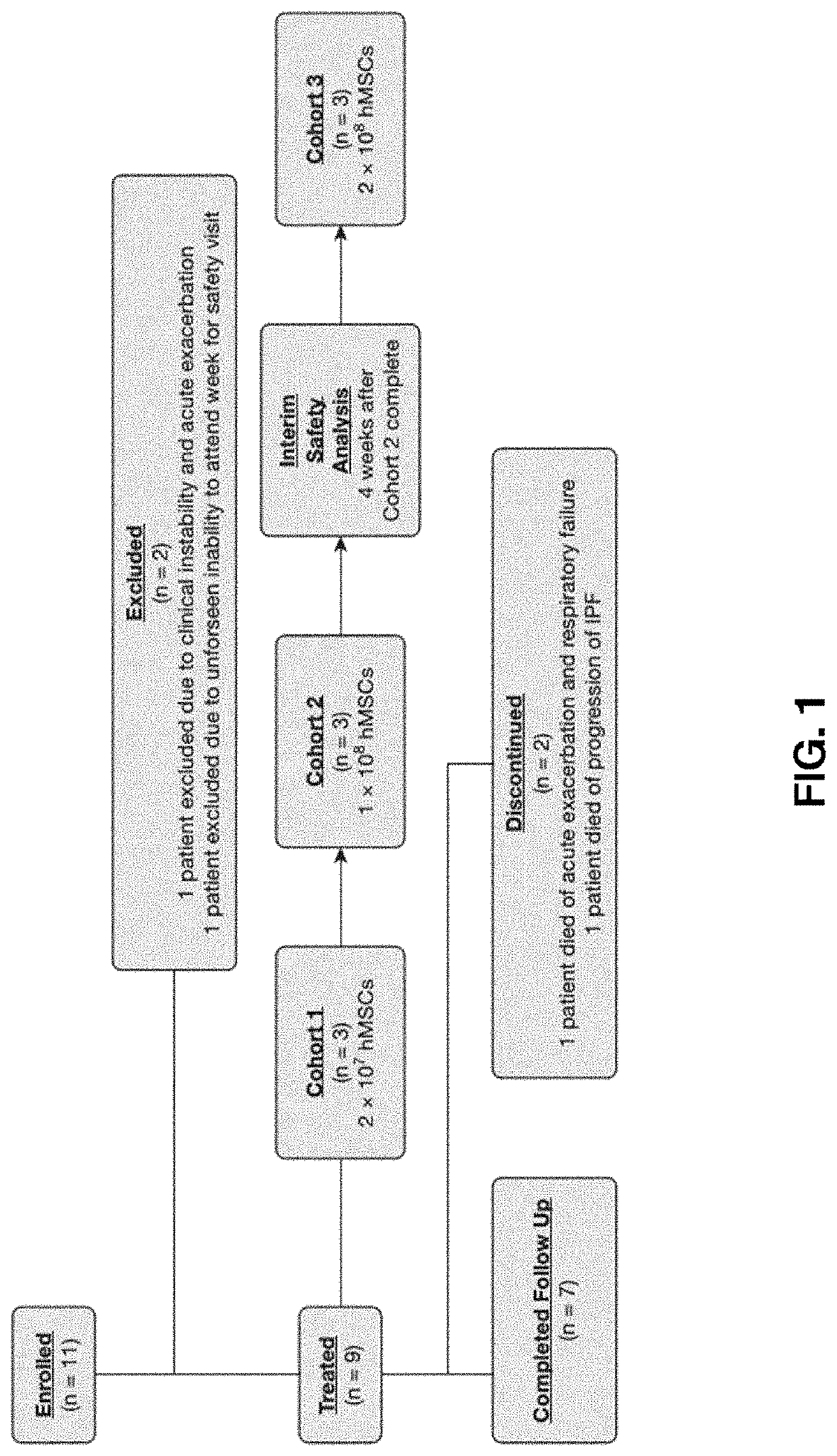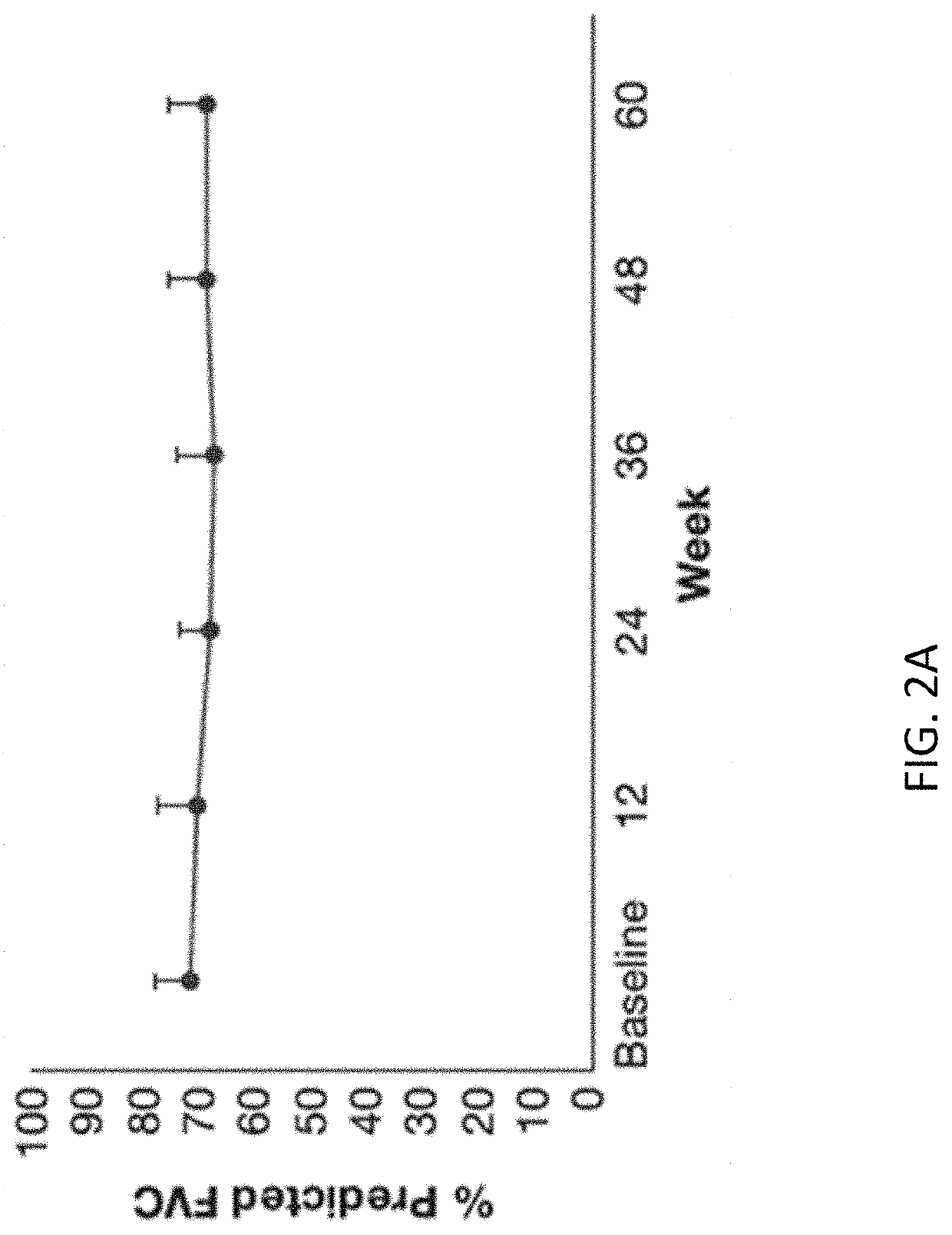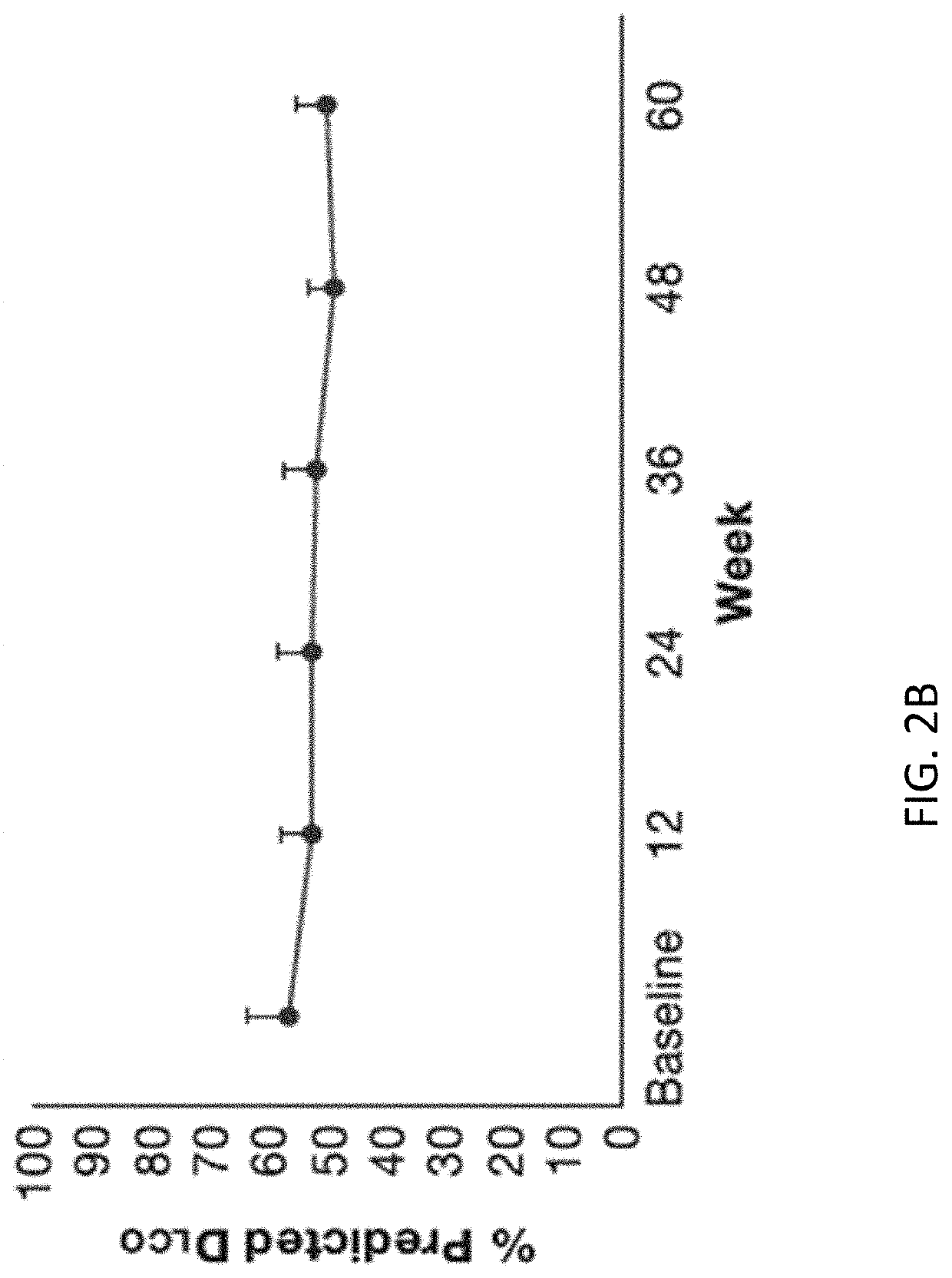Methods for attenuating viral infection and for treating lung injury
a viral infection and lung injury technology, applied in the field of attenuating viral infection and treating lung injury, can solve the problems of major morbidity and mortality in solid organ transplantation (sot) recipients, patients with compromised immune function are far more likely to experience poor outcomes per-subject, and respiratory viral infections are an important cause of morbidity
- Summary
- Abstract
- Description
- Claims
- Application Information
AI Technical Summary
Benefits of technology
Problems solved by technology
Method used
Image
Examples
example 1
REFERENCES FOR EXAMPLE 1
[0730]1. Raghu G, et al. An official ATS / ERS / JRS / ALAT statement: idiopathic pulmonary fibrosis: evidence-based guidelines for diagnosis and management. Am J Resp Crit Care Med. 183(6):788-824.[0731]2. Travis W D, et al. Idiopathic nonspecific interstitial pneumonia: report of an American Thoracic Society project. Am J Resp Crit Care Med. 2008; 177(12):1338-1347.[0732]3. Nishimura K, et al. Usual interstitial pneumonia: histologic correlation with high-resolution CT. Radiology. 1992; 182(2):337-342.[0733]4. Johkoh T, Muller N L, Cartier Y, et al. Idiopathic interstitial pneumonias: diagnostic accuracy of thin-section CT in 129 patients. Radiology. 1999; 211(2):555-560.[0734]5. King T E Jr., Bradford W Z, Castro-Bernardini S, et al. A phase 3 trial of pirfenidone in patients with idiopathic pulmonary fibrosis. N Engl J Med. 2014; 370(22):2083-2092.[0735]6. Richeldi L, et al. Nintedanib in patients with idiopathic pulmonary fibrosis: Combined evidence from the T...
example 2
REFERENCES FOR EXAMPLE 2
[0797]1. King T E, Jr., et al. A phase 3 trial of pirfenidone in patients with idiopathic pulmonary fibrosis. N Engl J Med 2014; 370: 2083-2092.[0798]2. Richeldi L, et al. Efficacy and safety of nintedanib in idiopathic pulmonary fibrosis. N Engl J Med 2014; 370:2071-2082.[0799]3. Hughes G, et al. Real World Experiences: Pirfenidone and Nintedanib are Effective and Well Tolerated Treatments for Idiopathic Pulmonary Fibrosis. J Clin Med 2016; 5.[0800]4. du Bois R M, et al. Forced vital capacity in patients with idiopathic pulmonary fibrosis: test properties and minimal clinically important difference. Am J Respir Crit Care Med 2011; 184: 1382-1389.[0801]5. Eakin E G, et al. Validation of a new dyspnea measure: the UCSD Shortness of Breath Questionnaire. University of California, San Diego. Chest 1998; 113: 619-624.[0802]6. Kupferberg D H, et al. Minimal clinically important difference for the UCSD Shortness of Breath Questionnaire. J Cardiopulm Rehabil 2005; 2...
example 3
REFERENCES FOR EXAMPLE 3
[0866]1. Raghu G, et al. Idiopathic pulmonary fibrosis in US Medicare beneficiaries aged 65 years and older: incidence, prevalence, and survival, 2001-11. Lancet Respir Med 2014; 2; 566-572.[0867]2. Collard H R, et al. A new era in idiopathic pulmonary fibrosis: considerations for future clinical trials. Eur Respir J 2015.[0868]3. Hunninghake G M. A new hope for idiopathic pulmonary fibrosis. N Engl J Med 2014; 370: 2142-2143.[0869]4. Toonkel R L, et al. Mesenchymal stem cells and idiopathic pulmonary fibrosis. Potential for clinical testing. Am J Respir Crit Care Med 2013; 188: 133-140.[0870]5. Redente E F, et al, Age and sex dimorphisms contribute to the severity of bleomycin-induced lung injury and fibrosis. Am J Physiol Lung Cell Mol Physiol 2011; 301: L510-518.[0871]6. Peng R, et al. Bleomycin induces molecular changes directly relevant to idiopathic pulmonary fibrosis: a model for “active” disease. PLoS One 2013; 8: e59348.[0872]7. Tashiro J, et al. The...
PUM
| Property | Measurement | Unit |
|---|---|---|
| Mass | aaaaa | aaaaa |
| Diameter | aaaaa | aaaaa |
| Diameter | aaaaa | aaaaa |
Abstract
Description
Claims
Application Information
 Login to View More
Login to View More - R&D
- Intellectual Property
- Life Sciences
- Materials
- Tech Scout
- Unparalleled Data Quality
- Higher Quality Content
- 60% Fewer Hallucinations
Browse by: Latest US Patents, China's latest patents, Technical Efficacy Thesaurus, Application Domain, Technology Topic, Popular Technical Reports.
© 2025 PatSnap. All rights reserved.Legal|Privacy policy|Modern Slavery Act Transparency Statement|Sitemap|About US| Contact US: help@patsnap.com



